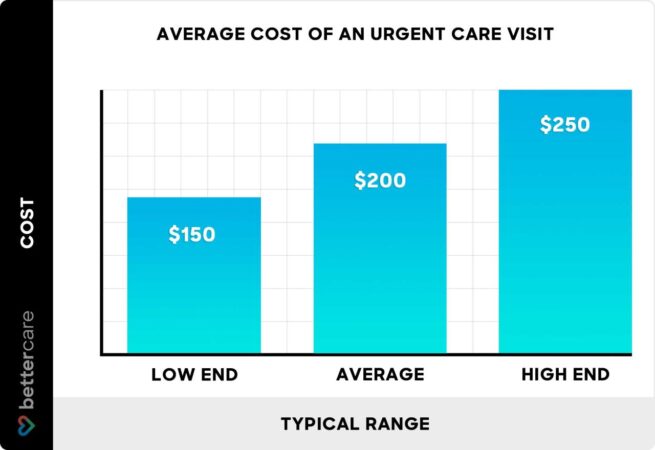
- The Role of Insurance Companies in Healthcare
- Hospital Perspective on Rate Negotiations
- Negotiation Strategies and Tactics
- Key Negotiation Factors
- Impact on Healthcare Costs and Quality
- Future Trends in Rate Negotiations: How Do Insurance Companies Negotiate Rates With Hospitals
- End of Discussion
- FAQ Compilation
How do insurance companies negotiate rates with hospitals? It’s a game of high stakes, where millions of dollars are on the line, and the health of patients hangs in the balance. Imagine a world where the cost of a hospital visit is a total mystery, where insurance companies and hospitals battle it out like gladiators in a Colosseum of healthcare costs. This is the reality of the healthcare system, where negotiating the price of medical care is a constant dance of power and compromise.
This complex dance involves understanding the different types of health insurance plans, the objectives of insurance companies, and the challenges faced by hospitals in balancing patient care with financial sustainability. It’s a game of strategy, data, and negotiation tactics, where both sides leverage their strengths to secure the best possible outcomes. This article delves into the intricacies of this fascinating world, exploring the key factors that shape the negotiation process and its impact on healthcare costs and quality.
The Role of Insurance Companies in Healthcare

Insurance companies play a crucial role in the healthcare system, acting as intermediaries between patients and healthcare providers. They manage health insurance plans, negotiate prices with hospitals, and control the flow of healthcare funds. This intricate relationship between insurance companies and hospitals significantly influences the cost and accessibility of healthcare.
Types of Health Insurance Plans
The various types of health insurance plans have a direct impact on how insurance companies negotiate with hospitals. The most common types of plans include:
- Health Maintenance Organizations (HMOs): HMOs typically have a network of providers that patients must use. These plans emphasize preventative care and cost-control measures, often leading to lower premiums but limited out-of-network coverage.
- Preferred Provider Organizations (PPOs): PPOs offer greater flexibility than HMOs, allowing patients to see providers outside the network, though at a higher cost. PPOs typically negotiate discounted rates with providers in their network.
- Point of Service (POS) Plans: POS plans combine features of both HMOs and PPOs, offering a network of providers but allowing patients to see out-of-network providers for a higher cost.
These different plan structures impact negotiations because insurance companies must consider the preferences and needs of their members. For example, an HMO might negotiate lower rates with hospitals due to its larger network and emphasis on cost-effectiveness. Conversely, a PPO might negotiate higher rates with hospitals because it offers greater flexibility to its members.
Objectives of Insurance Companies in Negotiating Rates with Hospitals
Insurance companies strive to achieve several objectives when negotiating rates with hospitals:
- Lowering Healthcare Costs: Insurance companies aim to reduce the cost of healthcare services for their members by negotiating lower rates with hospitals. This helps control premiums and keep healthcare affordable.
- Ensuring Access to Care: Insurance companies negotiate rates with hospitals to ensure that their members have access to a broad network of providers. They strive to establish contracts with hospitals in various geographic locations and specialties.
- Controlling Utilization: Insurance companies negotiate rates with hospitals to control the utilization of healthcare services. They might use strategies like pre-authorization requirements or incentivize preventative care to reduce unnecessary hospital visits.
- Maintaining Profitability: Insurance companies need to maintain profitability to ensure their long-term sustainability. They negotiate rates with hospitals to ensure that their revenue exceeds their expenses.
These objectives are often intertwined, as insurance companies seek to balance affordability, access, utilization, and profitability in their negotiations with hospitals.
Market Power of Insurance Companies
Insurance companies leverage their market power to influence hospital pricing through various strategies:
- Negotiating Large Contracts: Insurance companies often negotiate contracts with hospitals that cover a large number of members. This gives them significant bargaining power, allowing them to negotiate lower rates.
- Controlling Access to Patients: Insurance companies can influence hospital pricing by controlling access to their members. They can exclude hospitals from their network or restrict the services offered to patients who choose those hospitals.
- Utilizing Data and Analytics: Insurance companies use data and analytics to understand the costs and utilization patterns of different hospitals. This information allows them to negotiate more effectively and identify opportunities for cost savings.
- Leveraging Competition: Insurance companies often leverage competition among hospitals to negotiate favorable rates. They might pit hospitals against each other, using one hospital’s pricing as leverage to negotiate lower rates with another.
Insurance companies’ market power has a significant impact on hospital pricing. By negotiating lower rates and controlling access to patients, they can influence the overall cost of healthcare services.
Hospital Perspective on Rate Negotiations

Hospitals operate in a complex environment where the need to provide high-quality patient care clashes with the imperative to remain financially sustainable. This delicate balancing act heavily influences their pricing strategies and negotiation tactics when dealing with insurance companies.
Factors Influencing Hospital Pricing Strategies
Hospitals consider several factors when setting their prices, including:
- Operating Costs: Hospitals incur significant expenses for staff, supplies, equipment, facilities, and administrative overhead. These costs directly influence the prices they charge for services.
- Market Competition: The presence of other hospitals in the area, their pricing strategies, and the availability of alternative healthcare options affect a hospital’s pricing power. Hospitals may adjust their rates to remain competitive in their market.
- Patient Demographics: The socioeconomic characteristics of the patient population served by a hospital can influence its pricing. Hospitals serving a higher proportion of uninsured or low-income patients may need to offer lower rates to ensure access to care.
- Government Regulations: Medicare and Medicaid reimbursement rates, as well as state and federal regulations, can significantly impact hospital pricing. Hospitals must comply with these regulations and adjust their rates accordingly.
- Quality of Care: Hospitals that invest in advanced technology, specialized services, and highly trained staff may charge higher prices to reflect the higher quality of care they provide.
- Community Needs: Hospitals may consider the specific needs of their communities when setting prices. For example, a hospital in a rural area may offer lower rates for certain services to ensure access for residents.
Balancing Patient Care and Financial Sustainability
Hospitals face a constant challenge in balancing the need to provide quality care with the need to remain financially viable. This challenge is exacerbated by several factors:
- Rising Healthcare Costs: The cost of healthcare services, including pharmaceuticals, medical equipment, and staffing, has been steadily increasing, putting pressure on hospitals’ bottom lines.
- Increasing Uninsured Patients: The number of uninsured patients continues to rise, leading to a higher burden on hospitals to provide care for those who cannot afford it.
- Shifting Payment Models: The healthcare industry is moving away from fee-for-service models towards value-based care, which emphasizes quality outcomes and cost-effectiveness. This shift requires hospitals to adapt their pricing strategies and focus on efficiency.
- Pressure to Reduce Costs: Hospitals are constantly under pressure from payers, policymakers, and the public to reduce costs while maintaining quality care. This creates a challenging environment for hospitals to negotiate fair rates with insurance companies.
Key Considerations for Negotiating Rates
When negotiating rates with insurance companies, hospitals consider the following:
- Volume of Patients: Hospitals with a large volume of insured patients from a particular insurance company may have more leverage in negotiating higher rates. They can leverage their ability to provide a large patient pool to the insurer.
- Cost of Services: Hospitals must justify their rates by demonstrating the costs associated with providing the services. This includes labor, supplies, equipment, and overhead expenses.
- Quality of Care: Hospitals can emphasize their commitment to providing high-quality care and demonstrate their performance through quality metrics and patient satisfaction scores.
- Market Competition: Hospitals need to consider the rates offered by other hospitals in the area and the availability of alternative healthcare options. They may need to adjust their rates to remain competitive.
- Negotiation Strategies: Hospitals use a variety of negotiation strategies, including competitive bidding, bundled payments, and pay-for-performance models. They must choose the strategy that best aligns with their goals and the needs of their patients.
Negotiation Strategies and Tactics
Insurance companies and hospitals employ various negotiation strategies and tactics to secure favorable rates. The strategies they use are often influenced by their unique objectives, market dynamics, and the specific context of the negotiations.
Negotiation Approaches, How do insurance companies negotiate rates with hospitals
Insurance companies and hospitals approach negotiations with different perspectives. Insurance companies, seeking to minimize healthcare costs, tend to adopt a more competitive approach. Hospitals, on the other hand, focus on maximizing revenue and ensuring the financial sustainability of their operations.
- Insurance Companies:
- Competitive Bidding: Insurance companies often engage in competitive bidding processes, where hospitals submit proposals for providing services. This allows insurance companies to compare prices and negotiate lower rates.
- Negotiation Leverage: Insurance companies leverage their large subscriber base and market power to negotiate favorable terms with hospitals.
- Data-Driven Approach: Insurance companies utilize data analytics to identify areas where costs can be reduced and negotiate accordingly.
- Hospitals:
- Value-Based Negotiation: Hospitals emphasize the quality of care and patient outcomes, seeking to negotiate rates based on their performance and value proposition.
- Cost-Plus Pricing: Some hospitals use cost-plus pricing models, where they charge a markup on their actual costs of providing services.
- Market Analysis: Hospitals analyze market trends and competitor pricing to determine appropriate rate levels.
Role of Data and Analytics
Data and analytics play a crucial role in supporting negotiation strategies. Both insurance companies and hospitals utilize data to understand market trends, identify cost-saving opportunities, and strengthen their negotiation positions.
- Claims Data Analysis: Insurance companies analyze claims data to identify patterns, high-cost procedures, and areas where utilization can be optimized. This information allows them to negotiate rates based on specific procedures or patient demographics.
- Hospital Performance Metrics: Hospitals use data on quality of care, patient satisfaction, and operational efficiency to demonstrate their value and justify higher rates. For example, hospitals with lower readmission rates or higher patient satisfaction scores may be able to negotiate higher rates based on their performance.
- Market Research: Both parties conduct market research to understand competitor pricing, provider network dynamics, and patient preferences. This data helps them formulate realistic rate expectations and identify potential leverage points during negotiations.
Common Tactics
Both insurance companies and hospitals employ various tactics to achieve favorable outcomes during negotiations. These tactics often involve strategic positioning, leveraging information, and understanding the other party’s motivations.
- Insurance Companies:
- Negotiation Deadlines: Insurance companies may set strict deadlines to pressure hospitals into accepting lower rates. This tactic creates a sense of urgency and can lead to concessions.
- Threat of Network Exclusion: Insurance companies may threaten to exclude hospitals from their provider networks if they refuse to accept their proposed rates. This tactic leverages the insurance company’s market power and can incentivize hospitals to compromise.
- Bundled Payments: Insurance companies may propose bundled payments for specific procedures or care episodes, which can reduce administrative costs and incentivize hospitals to focus on efficiency.
- Hospitals:
- Value-Based Arguments: Hospitals may emphasize their high-quality care, specialized services, and positive patient outcomes to justify higher rates.
- Community Impact: Hospitals may highlight their role in serving the community and their commitment to providing essential healthcare services. This tactic can appeal to the insurance company’s social responsibility and encourage them to consider factors beyond cost.
- Strategic Partnerships: Hospitals may form strategic partnerships with other healthcare providers to increase their bargaining power and negotiate more favorable rates with insurance companies.
Key Negotiation Factors

Negotiating rates between insurance companies and hospitals is a complex dance, influenced by various factors. Understanding these factors is crucial for both parties to reach mutually beneficial agreements.
Market Competition
Market competition plays a significant role in determining negotiated rates. In areas with a high concentration of hospitals, insurance companies have more bargaining power, leading to lower rates. Conversely, in areas with limited hospital options, hospitals have more leverage, resulting in higher rates.
- Example: In a city with numerous hospitals, insurance companies can negotiate lower rates as they can easily switch to another provider. Conversely, in a rural area with only one hospital, the hospital has more power to set higher rates.
Government Regulations and Healthcare Policies
Government regulations and healthcare policies, such as Medicare and Medicaid reimbursement rates, can influence negotiated rates. These policies establish minimum reimbursement levels, impacting the negotiation process.
- Example: Medicare sets a specific reimbursement rate for certain procedures, which serves as a benchmark for private insurance companies when negotiating rates with hospitals.
Patient Demand and Access to Care
Patient demand and access to care significantly influence negotiated rates. High patient demand for a particular hospital or service can give the hospital more leverage in negotiations. Similarly, hospitals in underserved areas may be able to negotiate higher rates due to the limited access to care.
- Example: A specialized cancer center with a high reputation and patient demand can negotiate higher rates for its services, as patients are willing to pay for its expertise.
Impact on Healthcare Costs and Quality
The negotiation process between insurance companies and hospitals has a significant impact on healthcare costs and the quality of patient care. This complex interplay can lead to both positive and negative consequences, influencing the affordability and effectiveness of healthcare services for patients.
Relationship Between Negotiated Rates and Healthcare Costs
Negotiated rates between insurance companies and hospitals play a crucial role in determining the overall cost of healthcare. When insurance companies secure lower rates from hospitals, they can offer lower premiums to their policyholders, making healthcare more affordable. However, hospitals may need to reduce their services or quality to maintain profitability under these lower rates. This can lead to longer wait times, reduced staffing, or limited access to specialized treatments.
Lower negotiated rates can potentially lead to lower healthcare costs for patients but may also compromise the quality of care.
Potential Implications of Rate Negotiations on the Quality of Patient Care
Negotiated rates can impact the quality of patient care in various ways. Hospitals may face pressure to cut costs to meet the terms of their contracts with insurance companies. This can lead to:
- Reduced staffing levels, which can result in longer wait times for appointments and procedures, and potentially affect the quality of care.
- Limited access to specialized equipment and technology, which can hinder the diagnosis and treatment of complex medical conditions.
- Pressure on physicians to see more patients in shorter timeframes, which can compromise the thoroughness of patient consultations and care plans.
Advantages and Disadvantages of Different Negotiation Outcomes
The outcome of rate negotiations can significantly influence the healthcare landscape. Here’s a table comparing the advantages and disadvantages of different negotiation scenarios:
| Negotiation Outcome | Advantages | Disadvantages |
|---|---|---|
| Lower negotiated rates for insurance companies | Lower premiums for policyholders, potentially making healthcare more affordable. | Hospitals may face financial strain, leading to reduced services, quality of care, or staffing. |
| Higher negotiated rates for hospitals | Hospitals can maintain or improve their financial stability, potentially leading to investments in infrastructure and technology. | Higher premiums for policyholders, potentially making healthcare less affordable. |
| Compromise negotiated rates | A balance between affordability and quality of care, potentially leading to a more sustainable healthcare system. | May not fully address the concerns of either insurance companies or hospitals, leading to ongoing tensions. |
Future Trends in Rate Negotiations: How Do Insurance Companies Negotiate Rates With Hospitals
The healthcare landscape is constantly evolving, and the way insurance companies negotiate rates with hospitals is no exception. Emerging technologies, shifting demographics, and evolving regulatory frameworks are all influencing the dynamics of these negotiations. Here are some key trends to watch for:
Impact of Emerging Technologies
The rise of artificial intelligence (AI), big data analytics, and telehealth is transforming the healthcare industry. These technologies are impacting negotiations in several ways:
- Data-Driven Negotiations: AI and big data analytics enable insurance companies to analyze vast amounts of data to identify patterns, predict costs, and optimize reimbursement rates. This allows them to negotiate more effectively based on real-time insights into patient populations, treatment patterns, and cost trends.
- Telehealth and Virtual Care: The increasing adoption of telehealth is changing the way healthcare is delivered. Insurance companies are seeking to negotiate lower rates for virtual care services, as they often cost less than traditional in-person visits. Hospitals, on the other hand, are looking to leverage telehealth to expand their reach and potentially negotiate higher rates for specialized virtual care services.
- Automated Negotiation Platforms: Some companies are developing automated negotiation platforms that leverage AI to streamline the negotiation process. These platforms can analyze contracts, identify areas of agreement and disagreement, and generate counter-offers, potentially leading to faster and more efficient negotiations.
Challenges and Opportunities
The future of rate negotiations presents both challenges and opportunities for both insurance companies and hospitals.
- Transparency and Data Sharing: As data becomes increasingly important in negotiations, both sides face the challenge of ensuring data accuracy, privacy, and security. Hospitals may need to become more transparent about their costs and performance data, while insurance companies must be careful to use data responsibly and ethically.
- Value-Based Care: The shift towards value-based care models, which emphasize quality and outcomes over volume, is creating new challenges for both sides. Hospitals need to demonstrate the value they provide, while insurance companies must develop new metrics and payment models to incentivize quality care.
- Competition and Consolidation: The healthcare market is becoming increasingly consolidated, with large hospital systems and insurance companies acquiring smaller players. This consolidation can lead to more complex negotiations and potential market power imbalances.
Evolving Negotiation Landscape
Here’s a scenario outlining how the negotiation landscape might evolve in the coming years:
Imagine a future where hospitals and insurance companies leverage AI-powered platforms to analyze patient data, predict costs, and generate personalized payment models. These platforms could facilitate real-time negotiations based on specific patient needs and treatment plans, leading to more efficient and transparent agreements. Hospitals might offer bundled payments for specific conditions, while insurance companies could provide incentives for preventative care and adherence to treatment plans. The focus would shift from negotiating individual services to negotiating outcomes and value.
End of Discussion
Ultimately, the negotiation between insurance companies and hospitals is a crucial factor in shaping the landscape of healthcare. It’s a complex process with significant implications for both patients and providers. As technology continues to evolve and healthcare faces new challenges, the dynamics of these negotiations will undoubtedly continue to shift. Understanding the key players, their objectives, and the factors that influence the negotiation process is essential for navigating the ever-changing world of healthcare costs and quality.
FAQ Compilation
What happens if an insurance company and a hospital can’t agree on a rate?
If they can’t agree, patients may be stuck with higher out-of-pocket costs or have limited access to certain hospitals. In some cases, there might be a third-party mediator involved to help reach an agreement.
How often are these rates renegotiated?
Rates are typically renegotiated every year or two, but the frequency can vary depending on factors like market conditions and changes in healthcare policy.
What are the ethical considerations involved in these negotiations?
The ethical considerations are significant, as the decisions made can impact the affordability and accessibility of healthcare for patients. It’s a balancing act between ensuring financial sustainability for hospitals and providing affordable care for patients.




